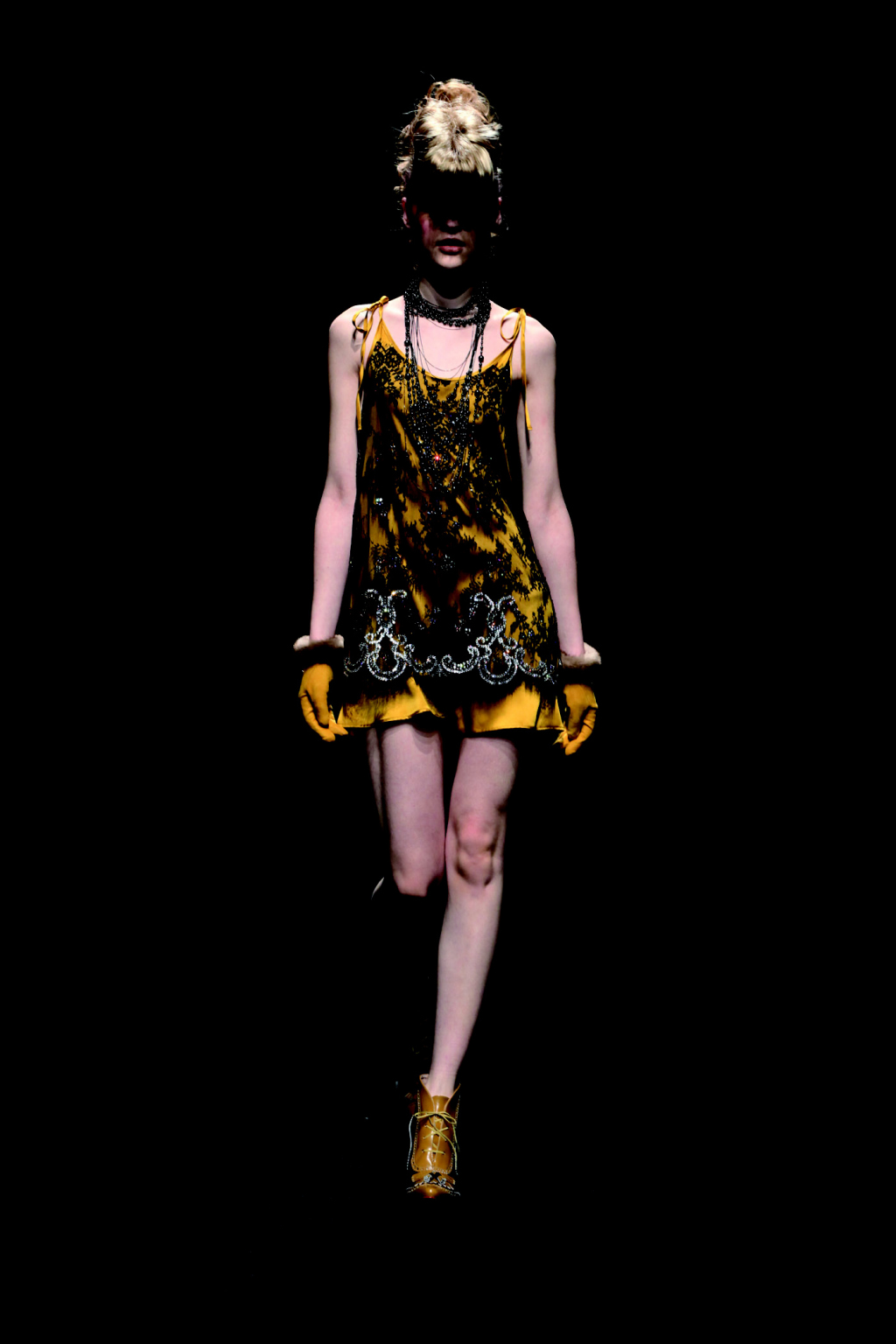by Kelly Wetherille
In the three and a half years since re-launching Tokyo Collection as Japan Fashion Week in TOKYO, organizers have been trying to position this government-subsidized event as an international fashion destination. Unfortunately, they have so far been largely unsuccessful in this endeavor, but it’s not for a lack of talent. Japan is infamously home to some of the world’s most discerning consumers, as well as birthplace of some of the most creative designers ever to work in fashion. Despite the global economic downturn, the Autumn Winter 2009 season of Japan Fashion Week did not disappoint – there may have been fewer kitschy gimmicks and over-the-top extras, but there was no shortage of well-conceived and expertly tailored garments.
The week’s festivities were kicked off by the inaugural SHINMAI Creator’s Project, which was created to help young designers from around the world gain an “in” to the Japanese fashion market. Most entrants are recent fashion school graduates (a recommendation from a professor is one of the application requirements) whose work is critiqued by a panel of judges consisting of professionals from such companies as Chanel, Isetan, Onward and Issey Miyake. The five applicants selected by the committee then are invited to Japan Fashion Week to showcase their work in a sponsored fashion show. For this first exhibition, selected designers hailed from as near as Fukuoka and as far as Paris. Iranian Nima Taherzadeh, a graduate of Parsons The New School for Design in New York City, presented a particularly solid collection of chic, modern dresses and separates that looked straight off of Fifth Avenue.
As the professional shows by established brands got underway, matohu (designed by Hiroyuki Hirohata and Makiko Sekiguchi) was one of the early standouts. From the invitations (a long rectangle of paper that when unfolded revealed the image of a samurai sword) to the clothes themselves, the whole affair had a distinctly Japanese feel. Kimono-inspired wrap dresses and coats fashioned from black and deep blue silks and jacquard fabrics were juxtaposed with fur jackets and ponchos, producing a relaxed yet sophisticated look.
Another early exhibitor with a pronounced theme was Motonari Ono, whose flirty, feminine collection saw a recurrence of black lace. Whether trimming satin blouses, layered over slip dresses or on the lapels of a tuxedo-style jacket, the material showed up in unexpected, often quirky ways, lending the collection an eclectic air. Classic, structured pieces were mixed with girly frills and ruffles, creating an effect of playful yet grown-up glamour.
Kamishima Chinami turned out a collection of loosely tailored jackets and vests paired with minidresses in satin, chiffon and boucle for her eponymous line. The focus was on the details, such as blazers with open backs and sleeves covered in large rectangular plastic sequin-like embellishments that called to mind a warrior’s gleaming armor. Like many of the week’s collections, the palette was almost completely neutral, but splashes of mustard and lilac lightened things up.
Designer Sara Arai has been making made-to-order clothes for years but debuted her prêt-a-porter line, araisara, at this season’s fashion week. Inspired by vintage kimonos from the Meiji era (1868-1912), the collection showcased the same intricate detailing and expert craftsmanship as her couture line. A long patchwork skirt made entirely of vintage kimono fabrics especially stood out, as did the wrap dresses fastened with wide obi-style belts.
One of the week’s most anticipated shows was that of G.V.G.V., a brand that has gained a dedicated following both here and abroad. The brainchild of a designer going by the name MUG, the collection has a distinctly rock star feel to it, and this season was no exception. Shaggy faux fur, chains, buckles, zippers, and even neoprene were all used in abundance, and the silhouettes were provocative and sexy. Barely-there minis and skin-tight leggings were updated with pronounced shoulders and lacquer-esque trim, lending a somewhat futuristic vibe.
One of the few exhibiting brands to offer menswear was LESSTHAN, by designer Ohal Ando. A Japan Fashion Week veteran for many years, Ando also works with various domestic musicians, designing stage costumes and tour wardrobes for them. This season’s collection featured preppy shapes with a downtown edge in plaid, checkered and argyle prints.
One of the week’s few non-Japanese participants, Han Ahn Soon provided a colorful alternative to the otherwise dark collections. Fur-trimmed tweed toggle coats, embroidered peasant dresses and lace shifts were accented with ethnic extras such as African-style beading and Eastern European-influenced embroidery.
One of the final exhibitors of the week, Akira Naka nevertheless presented a beautifully realized collection of chic, sophisticated pieces in an entirely neutral palette of blacks, grays and beiges accented with gold zippers. His background in knitwear design was evident in intricately patterned sweaters, skirts and leggings, but Naka is equally skilled in turning out sharply tailored jackets, coats and trousers.
These are just a few of the 37 brands that participated in this season’s Japan Fashion Week, but they represent the high level of talent possessed by the designers, as well as the excellent quality of the clothes themselves. The number of foreign buyers and press attending the shows this year was down from the previous season, but one can only hope that the organizers’ continued efforts to attract a more international clientele will soon pay off. It somehow doesn’t seem quite right to deny fashion connoisseurs the world over the chance to view and own such beautiful, well-made clothes.











